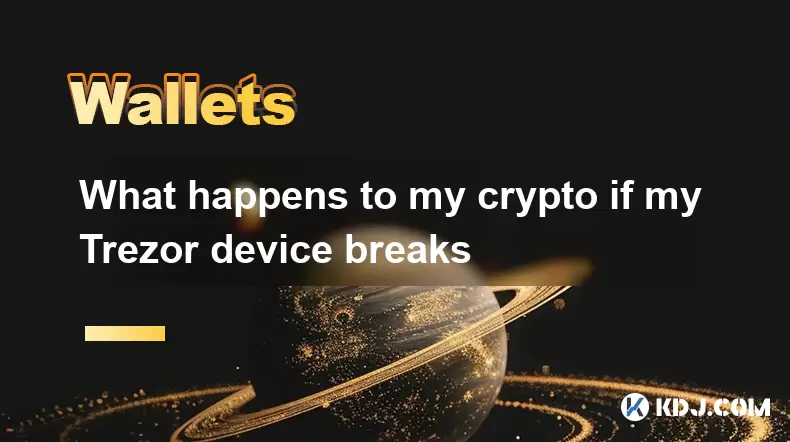-
 Bitcoin
Bitcoin $117,784.8122
6.03% -
 Ethereum
Ethereum $2,985.4492
7.49% -
 Tether USDt
Tether USDt $1.0002
-0.01% -
 XRP
XRP $2.6273
7.19% -
 BNB
BNB $688.8144
2.80% -
 Solana
Solana $164.1797
4.18% -
 USDC
USDC $0.9999
-0.01% -
 Dogecoin
Dogecoin $0.1989
10.08% -
 TRON
TRON $0.2961
2.12% -
 Cardano
Cardano $0.7259
15.27% -
 Hyperliquid
Hyperliquid $45.6326
10.22% -
 Sui
Sui $3.5222
9.17% -
 Chainlink
Chainlink $15.4621
7.77% -
 Bitcoin Cash
Bitcoin Cash $523.2404
1.57% -
 Stellar
Stellar $0.3163
8.13% -
 Avalanche
Avalanche $21.0098
7.48% -
 Hedera
Hedera $0.2044
14.78% -
 UNUS SED LEO
UNUS SED LEO $8.9812
0.11% -
 Shiba Inu
Shiba Inu $0.0...01346
7.75% -
 Toncoin
Toncoin $2.9763
3.02% -
 Litecoin
Litecoin $95.6221
5.22% -
 Polkadot
Polkadot $3.9508
7.50% -
 Monero
Monero $326.6734
1.59% -
 Uniswap
Uniswap $8.9185
8.19% -
 Dai
Dai $0.9999
-0.02% -
 Pepe
Pepe $0.0...01271
14.28% -
 Ethena USDe
Ethena USDe $1.0006
-0.03% -
 Bitget Token
Bitget Token $4.5228
2.14% -
 Aave
Aave $314.1302
6.41% -
 Pi
Pi $0.4909
0.64%
What is a hardware wallet's secure element
A hardware wallet's secure element is a specialized chip that safeguards cryptographic keys, ensuring transactions are signed securely without exposing sensitive data to potential threats.
Jul 11, 2025 at 10:14 pm

What is a Hardware Wallet's Secure Element?
A hardware wallet is one of the most secure ways to store cryptocurrencies. Unlike software wallets, which are vulnerable to online threats, hardware wallets keep private keys offline and isolated from potential hackers. Within this context, the secure element (SE) plays a critical role in ensuring that the device remains tamper-resistant and secure.
The secure element is a specialized microcontroller chip designed to securely host applications and store sensitive data such as cryptographic keys. It acts as a fortified vault inside the hardware wallet, ensuring that even if the device is compromised physically or digitally, the private keys remain inaccessible to attackers.
How Does the Secure Element Work in a Hardware Wallet?
In a hardware wallet, the secure element operates as a trusted execution environment. This means that all cryptographic operations involving private keys—such as signing transactions—are performed within the secure confines of the SE, without ever exposing the key itself to the outside world.
When a user initiates a transaction:
- The request is sent to the secure element.
- The SE verifies the request using built-in authentication protocols.
- If valid, it signs the transaction internally.
- Only the signed transaction is returned to the host device; the private key never leaves the secure element.
This process ensures that even if malware compromises the connected computer or smartphone, the attacker cannot extract the private key—they can only observe the signed output.
Why Is the Secure Element Important for Cryptocurrency Security?
The secure element is crucial because it protects against both logical and physical attacks. Logical attacks involve attempts to exploit vulnerabilities in the software, while physical attacks include efforts to extract data by dismantling the device.
Some of the protections offered by the secure element include:
- Tamper resistance: Physical layers prevent probing or side-channel attacks.
- Secure boot: Ensures that only authenticated firmware runs on the device.
- Encrypted storage: Sensitive data like private keys are stored in encrypted form.
- Access control: Requires user verification before performing sensitive operations.
These features make the secure element a cornerstone of trust in hardware wallets, significantly reducing the risk of fund loss due to theft or hacking.
Which Hardware Wallets Use Secure Elements?
Many popular hardware wallets incorporate secure elements into their design. Some notable examples include:
- Ledger Nano S/X: These devices use STMicroelectronics' secure element chips, which are certified under Common Criteria EAL5+ standards.
- Trezor Model T: While Trezor initially relied on open-source firmware without a dedicated secure element, newer models now integrate secure components to enhance protection.
- Bitbox02: Uses a combination of secure elements and trusted execution environments to safeguard keys.
Each manufacturer may implement the secure element differently, but the underlying principle remains the same: to isolate and protect cryptographic operations from external interference.
How to Verify That a Hardware Wallet Uses a Secure Element
Consumers should verify whether a hardware wallet actually uses a secure element before purchasing. Here’s how to do that:
- Check the product specifications: Reputable manufacturers clearly state whether their devices use secure elements.
- Review technical documentation: Most hardware wallet providers publish whitepapers or security analyses detailing their architecture.
- Look for certifications: Secure elements often come with certifications such as Common Criteria (CC) EAL4+ or EAL5+, FIPS 140-2, or CC EAL6+.
- Examine teardown reports: Independent tech blogs and forums sometimes perform teardowns of hardware wallets, revealing internal components including the presence of a secure element chip.
It's also advisable to cross-reference information with community forums or expert reviews to ensure accuracy and avoid marketing exaggerations.
Potential Vulnerabilities and Limitations of Secure Elements
While secure elements provide robust protection, they are not completely immune to compromise. Some limitations include:
- Supply chain attacks: Malicious actors could tamper with secure elements during manufacturing or distribution.
- Side-channel attacks: Sophisticated attackers might attempt to infer key material through power consumption or electromagnetic analysis.
- Firmware exploits: Even with secure elements, vulnerabilities in the surrounding firmware can lead to unauthorized access.
To mitigate these risks, users should always:
- Keep their hardware wallet firmware up to date.
- Purchase directly from official sources.
- Avoid using second-hand or unverified devices.
Understanding these limitations helps users maintain a realistic view of security and take additional precautions when necessary.
Frequently Asked Questions
Q: Can I upgrade the secure element in my hardware wallet?
No, the secure element is a fixed component embedded into the hardware wallet's circuitry. It cannot be upgraded or replaced without redesigning the entire device.
Q: Are all secure elements the same across different hardware wallets?
No, different manufacturers use various types and versions of secure elements. These vary based on certifications, performance, and specific security implementations.
Q: Does a hardware wallet without a secure element offer any protection?
Some wallets rely solely on open-source firmware and isolation techniques instead of a secure element. While they may still offer decent protection, they generally lack the hardened defenses provided by a dedicated secure element chip.
Q: How can I tell if my hardware wallet's secure element has been compromised?
Physical tampering usually leaves visible signs. For digital breaches, monitoring transaction signatures and checking firmware integrity via recovery phrases or checksums can help detect anomalies. However, detecting sophisticated attacks typically requires forensic analysis by experts.
Disclaimer:info@kdj.com
The information provided is not trading advice. kdj.com does not assume any responsibility for any investments made based on the information provided in this article. Cryptocurrencies are highly volatile and it is highly recommended that you invest with caution after thorough research!
If you believe that the content used on this website infringes your copyright, please contact us immediately (info@kdj.com) and we will delete it promptly.
- Bitcoin, Tokenization, and CZ Debunking: What's the Buzz?
- 2025-07-12 04:50:12
- Altcoins, Crypto Presales, and Use Cases: What's Hot in the NYC Crypto Scene?
- 2025-07-12 04:50:12
- Crypto Market Supercycle: Indicators to Watch for a Parabolic Surge
- 2025-07-12 04:30:11
- Bitcoin, Robert Kiyosaki, and the Economist's View: Navigating Market Enthusiasm
- 2025-07-12 04:30:11
- Strategy, Metaplanet, and Bitcoin Gains: A New Era of Corporate Finance?
- 2025-07-12 02:30:11
- Bitcoin's Wild Ride: Institutional Demand Fuels Surge to New Heights
- 2025-07-12 02:30:11
Related knowledge

What is a hardware wallet's secure element
Jul 11,2025 at 10:14pm
What is a Hardware Wallet's Secure Element?A hardware wallet is one of the most secure ways to store cryptocurrencies. Unlike software wallets, which ...

How to add a new network to MetaMask
Jul 11,2025 at 11:42pm
Understanding the Need to Add a New NetworkWhen using MetaMask, a popular Ethereum-based cryptocurrency wallet, users often need to interact with diff...

How to add Ethereum L2 networks like Arbitrum to Trezor
Jul 11,2025 at 12:36am
What Is Ethereum L2 and Why Add It to Trezor?Ethereum Layer 2 (L2) networks, such as Arbitrum, are scaling solutions designed to reduce congestion on ...

What happens to my crypto if my Trezor device breaks
Jul 11,2025 at 01:49pm
Understanding Hardware Wallet FailureWhen you store cryptocurrency in a Trezor hardware wallet, the private keys are kept offline, offering a high lev...

How to find a specific receiving address on my Trezor
Jul 09,2025 at 10:36pm
Understanding the Purpose of a Receiving AddressA receiving address is a unique identifier used in blockchain networks to receive cryptocurrency. Each...

How to connect Trezor to Rabby wallet
Jul 09,2025 at 05:49am
What Is Trezor and Rabby Wallet?Trezor is a hardware wallet developed by SatoshiLabs that allows users to securely store their cryptocurrency assets o...

What is a hardware wallet's secure element
Jul 11,2025 at 10:14pm
What is a Hardware Wallet's Secure Element?A hardware wallet is one of the most secure ways to store cryptocurrencies. Unlike software wallets, which ...

How to add a new network to MetaMask
Jul 11,2025 at 11:42pm
Understanding the Need to Add a New NetworkWhen using MetaMask, a popular Ethereum-based cryptocurrency wallet, users often need to interact with diff...

How to add Ethereum L2 networks like Arbitrum to Trezor
Jul 11,2025 at 12:36am
What Is Ethereum L2 and Why Add It to Trezor?Ethereum Layer 2 (L2) networks, such as Arbitrum, are scaling solutions designed to reduce congestion on ...

What happens to my crypto if my Trezor device breaks
Jul 11,2025 at 01:49pm
Understanding Hardware Wallet FailureWhen you store cryptocurrency in a Trezor hardware wallet, the private keys are kept offline, offering a high lev...

How to find a specific receiving address on my Trezor
Jul 09,2025 at 10:36pm
Understanding the Purpose of a Receiving AddressA receiving address is a unique identifier used in blockchain networks to receive cryptocurrency. Each...

How to connect Trezor to Rabby wallet
Jul 09,2025 at 05:49am
What Is Trezor and Rabby Wallet?Trezor is a hardware wallet developed by SatoshiLabs that allows users to securely store their cryptocurrency assets o...
See all articles

























































































